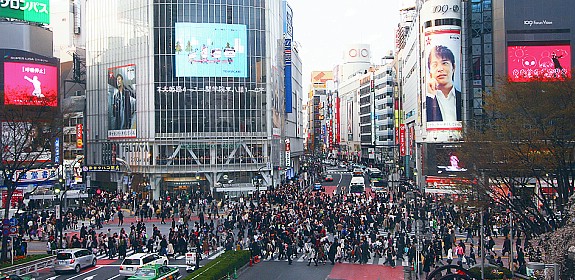
Move over Jurassic World, the long awaited sequel to our Tokyo deployment is here. Our Osaka data center is our 2nd in Japan, 5th in Asia (following deployments in Hong Kong, Tokyo, Singapore, and Seoul), and 35th globally. This latest deployment serves not only Osaka, Japan's second largest city, but also Nagoya, the 3rd largest, and the entire Keihanshin metropolitan area including Kyoto and Kobe. This means faster application delivery to the area's 30 million inhabitants, and full redundancy of traffic with our Tokyo facility. CloudFlare is now mere milliseconds away from all 110 million Internet users in Japan.
The Internet in Asia
Even though Asia is home to many of the most technologically advanced nations in the world, the delivery of Internet traffic across the region is hardly seamless. Many of the incumbent telecommunications providers in the region (e.g. NTT, Tata, PCCW, Hinet, Singtel, among many others) do not interconnect with one another locally. This is another way of saying that traffic is routed poorly in the region. Traffic sent from one network in Japan, for example, may have to pass through an entirely different country or, in some instances, even the United States, prior to being received by another network in Japan. What's worse is that the choke points where traffic is ultimately exchanged are often candidates for congestion (too much traffic, and too little capacity).

A metaphor (Shibuya crossing in Tokyo)
This isn't a new story, of course. European networks once found themselves in the same (sad) predicament with intra-European traffic exchanged through the United States. Fortunately, with the emergence of European based Internet exchange points (IXPs), nearly all Internet traffic in Europe now remains within Europe. Moreover, many of these exchange points such as AMS-IX in Amsterdam, DE-CIX in Frankfurt and LINX in London, among others, have become some of the biggest in the world (note: CloudFlare is a member of each of these exchanges, as well as 20 others in Europe, and over 80 globally).
As Europe goes, so goes Asia?
Not quite, but things are changing. Unlike Europe, where economies are tens of miles apart, Asian countries are often thousands of miles apart with an ocean in the middle. In addition, where many European countries share the same, or similar languages, Internet content is Asia is highly regional due to higher language barriers.
Commercial interests also play a role. The aforementioned incumbent carriers hold significant control over the exchange of Internet traffic in their respective markets. As a means to preserve market power and inhibit competition, many refuse to interconnect with other providers locally. For example, of the two Tier 1 Internet service providers in Asia, NTT Communications (Japan) and Tata (India), neither interconnect with one another in their home markets. If you were to purchase Internet connectivity from Tata in Japan, you would have to send your traffic through Hong Kong to reach NTT's Japanese customers.
Despite this, the growth in IXPs in the region is encouraging. Osaka alone has multiple exchange points—JPIX, JPNAP, BBIX and Equinix—providing local interconnection to many Japanese networks. CloudFlare is proud to be a member of each of these exchanges. Because of our Anycast network architecture, all networks connected to us over these exchanges prefer the, now, shorter path to our network in Osaka (more below).
Solving the challenges of the Internet
If you regularly follow our blog you will have noticed that the delivery of applications over the Internet is both remarkably challenging and complex. It takes a global network, direct interconnection with global and regional carriers, significant investment in hardware and infrastructure, and the teams of engineers necessary to build, operate and manage it all, in order to deploy high availability, low latency, and secure applications.
Fortunately we've done just this so that you don't have to. In Asia alone CloudFlare maintains direct connectivity to all Tier 1 operators (i.e. NTT and Tata), to major regional incumbents (e.g. Korea Telecom, PCCW, etc.), and nearly 20 Internet exchange points throughout the region.
A view from a network in Nagoya, Japan (now hitting Osaka vs. Tokyo)
The example above shows the latency improvement for a user in Nagoya (a 50 minute Shinkansen bullet train away from Osaka vs. 1 hour and 40 minutes to Tokyo). The decrease from 11ms to 7ms may not be much (although much faster than a Shinkansen train!), but it matters when you're as performance-obsessed as we are.
Whether your applications are hosted in your own data center, in the cloud (e.g. Azure, AWS, Rackspace, etc.) or with one of our many hosting partners, your applications are a 5 minute sign-up away from a faster, safer and better Internet.
Arigatō (ありがとう) - the CloudFlare team


